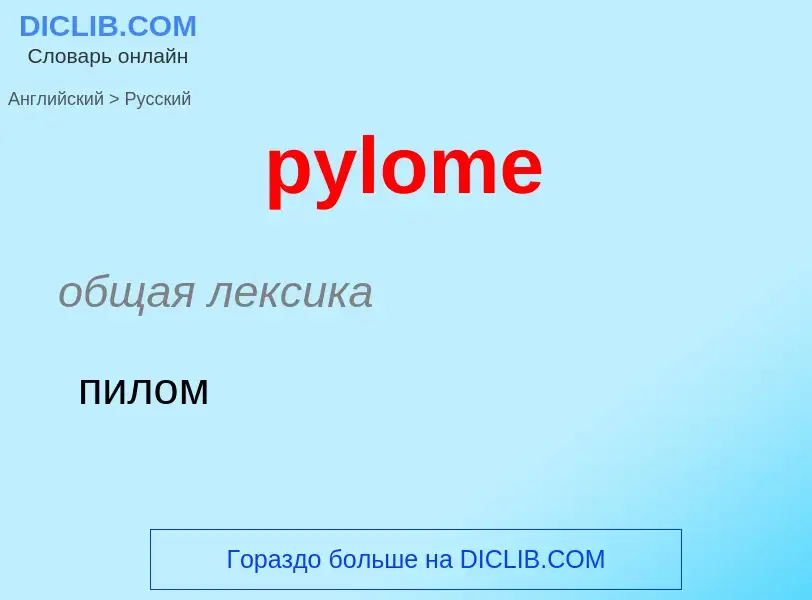Tradução e análise de palavras por inteligência artificial ChatGPT
Nesta página você pode obter uma análise detalhada de uma palavra ou frase, produzida usando a melhor tecnologia de inteligência artificial até o momento:
- como a palavra é usada
- frequência de uso
- é usado com mais frequência na fala oral ou escrita
- opções de tradução de palavras
- exemplos de uso (várias frases com tradução)
- etimologia
pylome - tradução para russo
общая лексика
пилом
общая лексика
фораминиферы
Смотрите также
Definição
Wikipédia

Foraminifera (; Latin for "hole bearers"; informally called "forams") are single-celled organisms, members of a phylum or class of amoeboid protists characterized by streaming granular ectoplasm for catching food and other uses; and commonly an external shell (called a "test") of diverse forms and materials. Tests of chitin (found in some simple genera, and Textularia in particular) are believed to be the most primitive type. Most foraminifera are marine, the majority of which live on or within the seafloor sediment (i.e., are benthic), while a smaller number float in the water column at various depths (i.e., are planktonic), which belong to the suborder Globigerinina. Fewer are known from freshwater or brackish conditions, and some very few (nonaquatic) soil species have been identified through molecular analysis of small subunit ribosomal DNA.
Foraminifera typically produce a test, or shell, which can have either one or multiple chambers, some becoming quite elaborate in structure. These shells are commonly made of calcium carbonate (CaCO
3) or agglutinated sediment particles. Over 50,000 species are recognized, both living (6,700–10,000) and fossil (40,000). They are usually less than 1 mm in size, but some are much larger, the largest species reaching up to 20 cm.
In modern scientific English, the term foraminifera is both singular and plural (irrespective of the word's Latin derivation), and is used to describe one or more specimens or taxa: its usage as singular or plural must be determined from context. Foraminifera is frequently used informally to describe the group, and in these cases is generally lowercase.




![Ammonia beccarii]]'', a benthic foram from the [[North Sea]]. Ammonia beccarii]]'', a benthic foram from the [[North Sea]].](https://commons.wikimedia.org/wiki/Special:FilePath/Ammonia beccarii.jpg?width=200)
![A fossil test from a planktonic [[globigerinina]]n foraminifera. A fossil test from a planktonic [[globigerinina]]n foraminifera.](https://commons.wikimedia.org/wiki/Special:FilePath/Foraminifera hg.jpg?width=200)





![peneroplid]] foraminiferan from [[Holocene]] lagoonal sediment in Rice Bay, [[San Salvador Island]], Bahamas. Scale bar 100 micrometres peneroplid]] foraminiferan from [[Holocene]] lagoonal sediment in Rice Bay, [[San Salvador Island]], Bahamas. Scale bar 100 micrometres](https://commons.wikimedia.org/wiki/Special:FilePath/Peneroplid thin section PP.jpg?width=200)
![Ten species of planktic foraminifera [[microfossil]]s from [[Paleocene-Eocene Thermal Maximum]] (PETM) sediments in southern Maryland.<ref>Robinson, Marci (2021) [https://www.usgs.gov/media/images/planktic-foraminifera-southern-maryland Planktic Foraminifera from Southern Maryland] ''United States Geological Survey''.</ref> The scale bars measure 150 microns (0.015 cm). Each specimen is similar in size to a grain of sand. Ten species of planktic foraminifera [[microfossil]]s from [[Paleocene-Eocene Thermal Maximum]] (PETM) sediments in southern Maryland.<ref>Robinson, Marci (2021) [https://www.usgs.gov/media/images/planktic-foraminifera-southern-maryland Planktic Foraminifera from Southern Maryland] ''United States Geological Survey''.</ref> The scale bars measure 150 microns (0.015 cm). Each specimen is similar in size to a grain of sand.](https://commons.wikimedia.org/wiki/Special:FilePath/Planktic foraminifera microfossils from southern Maryland.png?width=200)
![Earliest known illustration of a foraminifera shell, published by Robert Hooke in his 1665 book ''[[Micrographia]]''. Earliest known illustration of a foraminifera shell, published by Robert Hooke in his 1665 book ''[[Micrographia]]''.](https://commons.wikimedia.org/wiki/Special:FilePath/Robert Hooke foraminifera.png?width=200)









